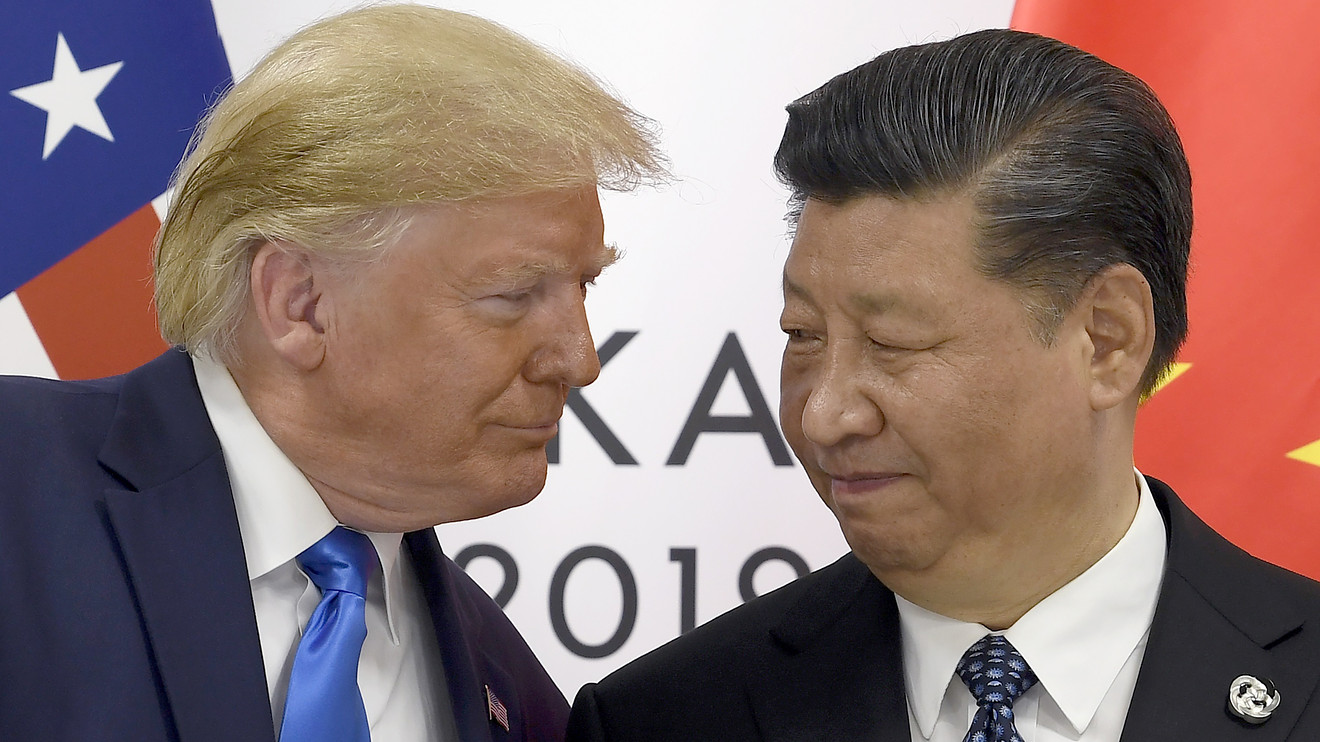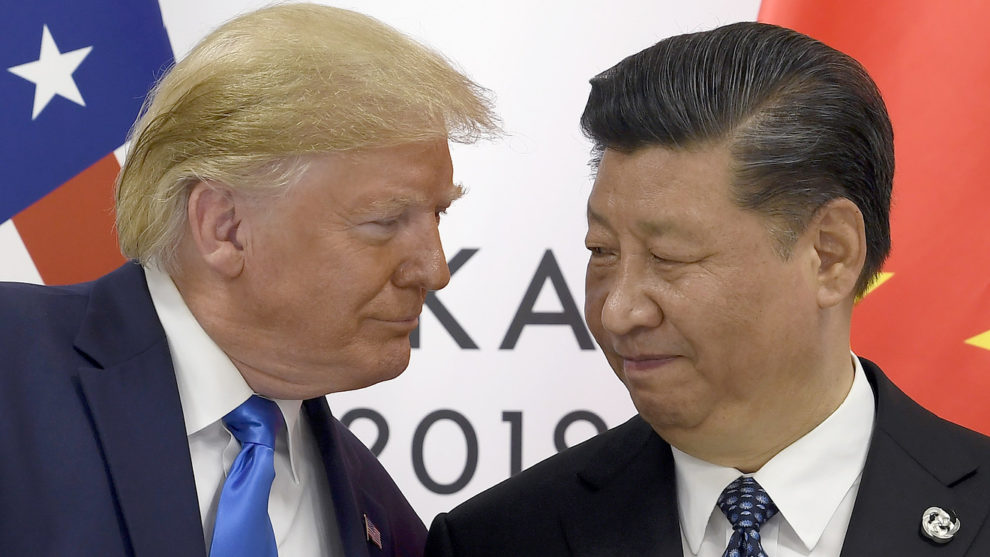
To understand the post-COVID-19 world that is coming, there is one important human statistic we must bear in mind: 330 million people live in the U.S.; 1.4 billion in China and approximately 6 billion in the rest of the world. These 6 billion, who live in 191 countries, have begun preparing themselves for the US-China geopolitical contest. Their choices will determine who will win.
For most Americans, the contest is a no-brainer. Given a choice between a freedom-loving democratic U.S. and an oppressive Communist China, the 6 billion would choose U.S. Indeed many aspects of the U.S. remain more appealing: great universities (for example, Harvard and Yale); Broadway and Hollywood. Yet declining powers can also retain their cultural attractions. Witness the U.K. with Cambridge and Oxford, Shakespeare and Jane Austen.
The elites who run these 191 countries have been mostly educated in Western-style universities. They have learned to apply the cold calculus of reason to work out cost-benefit analyses of what both the U.S. and China have to offer them. Sentiments won’t play a role here. They have to decide at the end of the day which country, the U.S. or China, will improve their citizens’ living conditions.
Africa is a prime example. African leaders have studied East Asian economic success stories and learned from them. Trade, not aid, spurs economic growth. China is now the world’s largest trading power; its total trade is $4.43 trillion compared to $3.89 trillion for the U.S. To boost trade within Africa, first-rate infrastructure is needed. China is now the world’s infrastructure superpower, building badly-needed ports, railways, roads, and power stations in Africa. These projects include the megaport at Bagamoyo, Tanzaniya and the Addis Ababa-Djibouti Railway, which is the first fully-electrified cross-border railway in Africa. Paul Kagame, president of Rwanda, has said: “The Chinese bring what Africa needs: investment and money for governments and companies.” Here’s one leading indicator. When China convenes China-Africa summit meetings, all African leaders turn up.
It’s commonly believed that China is sucking all these poor countries into a debt-trap. A peer-reviewed academic study found this perception to be untrue. In a 2019 research paper, Johns Hopkins professor Deborah Brautigam concluded that most of these countries voluntarily signed on to these loans and had positive experiences working with China. Brautigam writes, “The evidence so far, including the Sri Lankan case, shows that the drumbeat of alarm about Chinese banks’ funding of infrastructure across the BRI and beyond is overblown.” She continues, “…a large number of people have favorable opinions of China as an economic model and consider China an attractive partner for their development.
For example, in 2014, 65% in Kenya, 67% in Ghana and 85% in Africa’s most populous country, Nigeria, held favorable views of China.” Hence, when China launched its Belt and Road Initiative (BRI), to build infrastructure from Central Asia to Africa (and even to Latin America), most countries signed on. Yes, China has made mistakes with BRI. Mahathir bin Mohamad protested against its terms when he became Prime Minister of Malaysia in 2018. However the deal was quietly renegotiated, and Mahathir became one of the key opening speakers of the BRI Summit in Beijing in 2019.
Italy is another leading indicator of how the world is turning. It’s a member of the G-7, the core group of the Western club. Its economy is ailing. China has stepped up to offer new investment in Italy. Former Italian Minister of Economy and Finance Giovanni Tria has called Chinese investments “a circle virtuous, satisfying and diffuse growth” and referred to them as “a train that Italy cannot afford to miss.” Now, COVID-19 has given China-Italy relations a major boost. While its fellow EU members initially balked at helping Italy, China responded almost immediately, sending 31 tons of much-needed medical equipment, pulmonary ventilators, face masks and protective suits.
Read: China will emerge from the coronavirus crisis stronger than the U.S., experts warn
In previous disasters, such as the 2004 Boxing Day Tsunami that hit Indonesia, the U.S. was the first to arrive with aid. China offered little. With COVID-19, the roles have reversed. The 6 billion people outside the U.S. and China are genuinely shocked to see the sharp contrast between the competent responses of China and the incompetent responses of the U.S. They would agree with the assessment of the World Health Organization: “China’s bold approach to contain the rapid spread of this new respiratory pathogen has changed the course of a rapidly escalating and deadly epidemic”.
Equally importantly, a leading Western medical journal, The Lancet, published an open letter from leading medical and public health professionals also praising China’s response, noting that efforts made by “scientists, public health professionals, and medical professionals of China… [were] remarkable.”
Winning friends and influencing people
Yet all of this doesn’t mean that the vast majority of countries will abandon the U.S. and join China’s camp. Far from it. Most countries want to maintain good ties with both powers, they just don’t want to be forced to choose. If China offers good and cheap 5G technology from Huawei, for example, most countries (including U.S. allies such as the U.K., Germany and France) want the freedom to choose the best technology or their telecommunications infrastructure. So when the U.S. imposes sanctions on countries buying from Huawei, it’s causing problems with friends.
Freedom to choose what is best for one’s own country is a demand that many friends of the U.S. are calling for. India and Turkey want to be free to choose S-400 missiles from Russia; Indonesia wants to buy Sukhoi jet fighters. Similarly, the U.K., France and Germany want the freedom to trade with Iran through INSTEX, a special clearing mechanism they set up to facilitate trade with Iran.
The U.S. can still recover a lot of influence it enjoyed in the world. Vast reservoirs of goodwill towards the U.S. remain, for example, among the 10 ASEAN nations of Southeast Asia. Indeed, two of them, Philippines and Thailand, are “technically” treaty allies with the U.S. Yet there is no doubt that both of these countries are now closer to China than to the U.S. All 10 ASEAN countries do more trade with China than with the U.S. To balance this, the stock of U.S. investment in ASEAN countries is far greater. Indeed, America’s total investment in ASEAN of $328 billion is far more than what it has invested in India, China, Japan and Korea combined. By contrast, the Chinese investment in ASEAN is about $150 billion.
The 10 ASEAN countries, like the 181 other countries, don’t want to be caught in a zero-sum geopolitical contest between the U.S. and China. Quite reasonably, they want to keep their options open. With skillful diplomacy, the U.S. can still win the game. Sadly, the art of diplomacy has been lost in Washington D.C. This has created a massive opening that China has taken full advantage of, on its way to victory over the post COVID-19 world.
Kishore Mahbubani is the author of Has China Won? The Chinese Challenge to American Primacy (Public Affairs, 2020). He is a distinguished fellow at the National University of Singapore’s Asia Research Institute. A former Singaporean diplomat, he was president of the United Nations Security Council between January 2001 and May 2002.
Read: U.S. public opinion toward China is at an all-time low, and it’s not solely about the coronavirus
More: Trump’s pandemic response was hindered by missed opportunities, ignored warnings











Add Comment